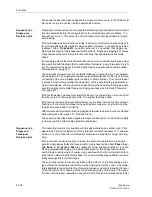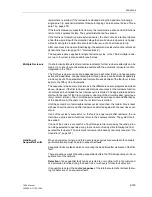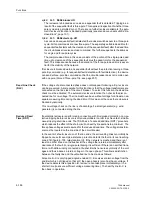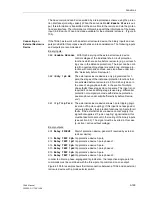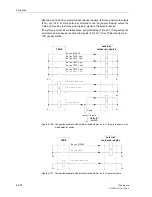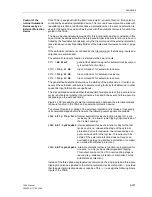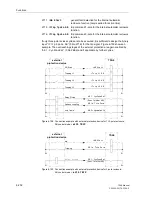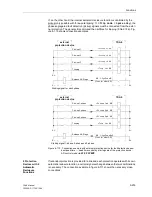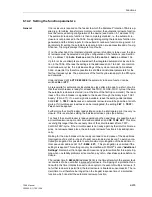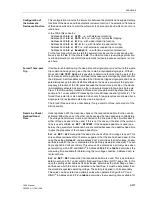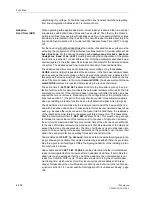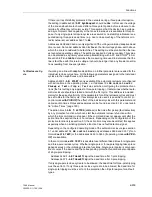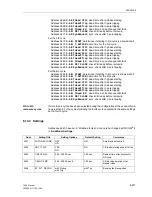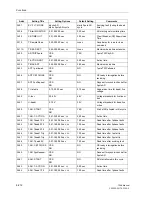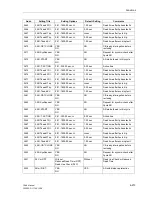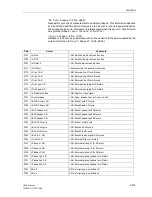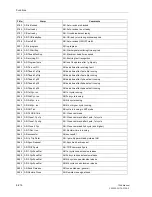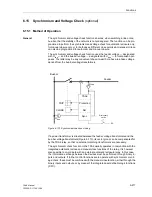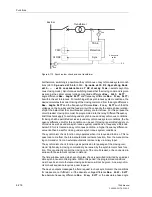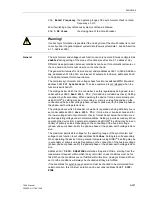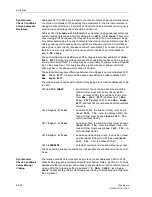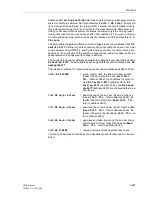
Functions
6-208
7SA6 Manual
C53000-G1176-C156-2
determining this voltage. It should be longer than any transient oscillations resulting
from line energisation. Address
3441
is irrelevant here.
Adaptive
Dead Time (ADT)
When operating with adaptive dead time, it must initially be ensured that one end per
line operates with defined dead times and has an infeed. The other (or the others in
multi-branch lines) may operate with adaptive dead time. It is essential that the voltage
transformers are located on the line side of the circuit breaker. Details about this func-
tion can be found in section 6.14.1 under subtitle “Adaptive Dead Time (ADT)” on page
197.
For the line end with defined dead times the number of desired reclose cycles must be
set during the configuration of the protective functions (section 5.1) under address
133
Auto Reclose
. For the devices operating with adaptive dead time
Auto Reclose
=
Adaptive Dead Time (ADT)
must be set during the configuration of the protec-
tive functions (section 5.1) under address
133
. Only the parameters described below
are interrogated in the latter case. No settings are then made for the individual reclos-
ure cycles. The adaptive dead time implies functionality of reduced dead time.
The adaptive dead time may be controlled by return voltage or by the remote–
CLOSE
–command. Both is possible at the same time. In the first case reclosure takes
place as soon as the return voltage, after reclosure at the remote end, is detected. For
this purpose the device must be connected to voltage transformers located on the line
side of the circuit breaker. In the case of remoteCLOSE, the device waits until the re-
moteCLOSE
command is received before issuing the reclose command.
The action time
T-ACTION ADT
(address
3433
) is the time after a pick-up by a pro-
tection function which is able to activate the automatic reclosure within which the trip
command must occur. If the command does not appear until after the action time has
expired, there is no reclosure. Depending on the configuration of the protection func-
tions (see section 5.1) the action time may also be omitted; this particularly applies
when an initiating protection function has no fault detection signal (only trip signal).
The dead times are determined by the reclosure command of the device at the line
end with the defined dead times. In cases where this reclosure command does not ap-
pear, e.g. because the reclosure was in the mean time blocked there, the readiness
of the local device must return to the quiescent state at some time. This takes place
after the maximum wait time
T-MAX ADT
(address
3434
). This must be long enough
to include the last reclosure of the remote end. In the case of single-shot reclosure,
the sum total of maximum dead time plus reclaim time of the other device is sufficient.
In the case of multiple reclosure the worst case is that all reclosures of the other end
except the last one are unsuccessful. The time of all these cycles must be taken into
account. To save having to make exact calculations, it is possible to use the sum of all
dead times and all protection operating times plus one reclaim time.
Under address
3435
ADT 1p allowed
it can be determined whether single-pole trip-
ping is allowed (on condition that single-pole tripping is possible). If
No
, the protection
trips three-pole for all fault types. If
Yes
the tripping capability of the initiating protec-
tion functions is decisive.
Under address
3436
ADT CB? CLOSE
it can be determine whether circuit-breaker
ready is interrogated before reclosure after an adaptive dead time. If set to
Yes
the
dead time may be extended if at the end of the dead time the circuit-breaker is not
ready for a CLOSE–TRIP–cycle. The maximum extension is by the circuit-breaker–
monitoring time; which was set for all reclosure cycles under address
3409
(see
above). Details about the circuit-breaker–monitoring can be found in the function de-
scription, section 6.14.1, under subtitle “Interrogation of Circuit-Breaker Ready”, page
192.
Summary of Contents for siprotec 7SA6
Page 2: ...Siemens Aktiengesellschaft Book No C53000 G1176 C156 2 ...
Page 18: ...xviii 7SA6 Manual C53000 G1176 C156 2 ...
Page 32: ...Introduction 1 14 7SA6 Manual C53000 G1176 C156 2 ...
Page 82: ...Hardware and Connections 2 50 7SA6 Manual C53000 G1176 C156 2 ...
Page 119: ...SIPROTEC 4 Devices 4 25 7SA6 Manual C53000 G1176 C156 2 Figure 4 20 CFC Logic example ...
Page 190: ...Configuration 5 62 7SA6 Manual C53000 G1176 C156 2 ...
Page 652: ...Installation and Commissioning 8 78 7SA6 Manual C53000 G1176 C156 2 ...
Page 724: ...Technical Data 10 56 7SA6 Manual C53000 G1176 C156 ...
Page 800: ...Appendix A 76 7SA6 Manual C53000 G1176 C156 2 ...
Page 866: ...Appendix B 66 7SA6 Manual C53000 G1176 C156 2 ...

